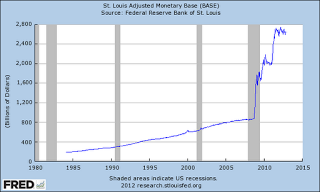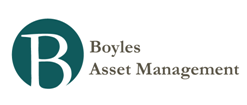Money and Finance

- Richard Duncan Quotes
Longer excerpt from The New Depression (taken from my Kindle highlights, so the excerpts aren’t necessarily the paragraphs I have put them in below, and there may be things in between that I didn’t highlight). “As central banks accumulate foreign...
- Albert Edwards: Spain's Bailout Solves Nothing
Going through Japan's lost decade with Peter Tasker was a prequel to our current plight. One of the key differences he had with consensus was on the banks. Consensus believed Japanese banks were at the apex of Japan's economic woes and the main...
- The Gutenberg Economy - By Michael Lewitt
Adam Smith is spoken of as the father of modern laissez faire capitalism, as well he should be. But the market system Smith described in The Wealth of Nations (1776) no longer exists. Instead, it has morphed into a system of fiat money that owes its existence...
- Hussman Weekly Market Comment: Bubble, Crash, Bubble, Crash, Bubble...
Last week, the Federal Reserve confirmed its intention to engage in a second round of "quantitative easing" - purchasing about $600 billion of U.S. Treasury debt over the coming months, in addition to about $250 billion that it already planned to purchase...
- Alan Greenspan Article From 1966: Gold And Economic Freedom
Interesting – in light of everything that has happened since it was written – article by Alan Greenspan from over 40 years ago. Thanks to Jason for passing it along. Under a gold standard, the amount of credit that an economy can support is determined...
Money and Finance
The myth of the money multiplier - by Steve Keen
Three Business Spectator readers contacted me directly about one topic last week – bank money creation, and how bank reserves work. Following an old journalism adage that three direct enquiries about a topic from the public means that everybody’s interested in it, I’m diving into wonkdom to answer their queries in detail here. Ignore this post if the adage isn’t true for you, but if it is and you haven’t yet had your morning Java, now’s the time for that stroll to the barista.
OK, caffeinated? Here we go.
The standard story about how banks create money, and how reserves work, is the “Money Multiplier Model”. Money creation starts with the government injecting “fiat money” into the economy – say by giving a welfare recipient $100 in cash. That recipient then deposits the cash in a bank, which hangs on to a government-mandated fraction of it (the “Reserve Requirement”) – say 10 per cent or $10 – and lends out the rest to a borrower. The borrower then deposits that $90 in another bank, which does the same thing – hangs onto 10 per cent of the $90 or $9, and lends out another $81 to another borrower.
The process repeats ad infinitum, and in the end a total of $1,000 is brought into existence: the original $100 in cash, plus $900 in credit money created by the private banking sector (matched, of course, by $900 in debt).
This alleged system, known as Fractional Reserve Banking, is seen as “fraud” by Austrian economists, and by many in the public. To inflationists, because Bernanke has hit the printing presses, dramatically increasing Base Money, and therefore money in circulation will soon explode, leading to hyperinflation.

To Neoclassical economists, it’s just the way banking works: bank lending is controlled by the Fed because, “even if banks hold no reserves”, Fed control over the currency means that private banks must do what the Fed wants.
And to anyone who’s done empirical research, it’s a myth.
- Richard Duncan Quotes
Longer excerpt from The New Depression (taken from my Kindle highlights, so the excerpts aren’t necessarily the paragraphs I have put them in below, and there may be things in between that I didn’t highlight). “As central banks accumulate foreign...
- Albert Edwards: Spain's Bailout Solves Nothing
Going through Japan's lost decade with Peter Tasker was a prequel to our current plight. One of the key differences he had with consensus was on the banks. Consensus believed Japanese banks were at the apex of Japan's economic woes and the main...
- The Gutenberg Economy - By Michael Lewitt
Adam Smith is spoken of as the father of modern laissez faire capitalism, as well he should be. But the market system Smith described in The Wealth of Nations (1776) no longer exists. Instead, it has morphed into a system of fiat money that owes its existence...
- Hussman Weekly Market Comment: Bubble, Crash, Bubble, Crash, Bubble...
Last week, the Federal Reserve confirmed its intention to engage in a second round of "quantitative easing" - purchasing about $600 billion of U.S. Treasury debt over the coming months, in addition to about $250 billion that it already planned to purchase...
- Alan Greenspan Article From 1966: Gold And Economic Freedom
Interesting – in light of everything that has happened since it was written – article by Alan Greenspan from over 40 years ago. Thanks to Jason for passing it along. Under a gold standard, the amount of credit that an economy can support is determined...

